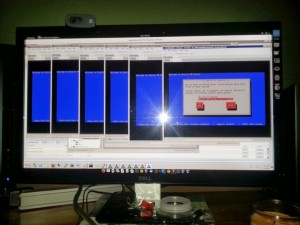Mount OVM Manager CD
Run the runInstaller.sh -u {UID of OLD Manager}
Restoring the MySQL Database for Oracle VM Manager
To restore the database to one of the available backups, the manager and the database need to shutdown, for example as the root user execute the following commands:
# service ovmm stop; service ovmm_mysql stop
To initiate the restore, as the oracle user, use the RestoreDatabase.sh command located in the /u01/app/oracle/ovm-manager-3/ovm_shell/tools, for example:
# su – oracle
$ bash /u01/app/oracle/ovm-manager-3/ovm_shell/tools/RestoreDatabase.sh
AutoFullBackup-10222012_162543
INFO: Expanding the backup image…
INFO: Applying logs to the backup snapshot…
INFO: Restoring the backup…
INFO: Success – Done!
INFO: Log of operations performed is available at:
/u01/app/oracle/mysql/dbbackup/AutoFullBackup-10172012_122920/Restore.log
IMPORTANT:
As ‘root’, please start the OVM Manager database and application using:
service ovmm_mysql start; service ovmm start
The RestoreDatabase.sh script expects the name of the directory for a particular backup directory. You do not need to specify the full path to the backup directory as this is already specified in the DBBACKUP variable.
Once you have restored the database, restart the database and manager as the root user:
# service ovmm_mysql start; service ovmm start
IMPORTANT:
Make sure your time is correct! I spent 2 hours troubleshooting login issues to new environment and it was the TIME@@!@!!!!!

